Japan has long been a favorite destination of mine, having fallen in love with the country since having the opportunity to live there for several years about a decade ago. During that time, I discovered countless opportunities for minimalist winter landscape photography, exploring the beautiful natural wonders hidden away from many Westerners who rarely get off the urban tourist trail when they do visit Japan.
By Guest Contributor Alyce Bender
What You Will Learn In This Article:
- Finding creative inspiration through details, patterns, and intentional camera movement.
- Mastering exposure settings to keep snowy minimalist scenes bright and natural.
- Streamlining your photography kit while maximizing your image portfolio.
- Dressing for fine art minimalist winter photography in Northern Japan.
- Caring for yourself and those around you can elevate your photography experience.
Why Hokkaido is Perfect for Minimalist Winter Landscape Photography

Far to the north, away from the hustle and bustle of the world’s largest metropolitan area, Hokkaido, Japan is where I continue to return annually, as it has so much to offer fine art and nature photographers, especially during the winter months. The region’s serene snow-covered landscapes make it an ideal destination for minimalist landscape photography, offering endless opportunities to capture the beauty of simplicity through the lens.
Visual artists from around the world have started finding various parts of Hokkaido, Japan, through photography tours and workshops. I, myself, have started offering winter wildlife and landscape photo tours in Hokkaido in recent years.
Here I will share how I capture the beautiful minimalist winter landscapes this area of Japan is becoming famous for.
I approach this topic much like Japan herself, by surrounding myself with four “C”s. While Japan is surrounded by four large bodies of water –the Sea of Okhotsk, the Sea of Japan, the East China Sea, and the Pacific Ocean – the four “C”s I am talking about are Clothing, Care, Cameras, and Craft. Let’s delve into these for more clarity.
C1: Clothing
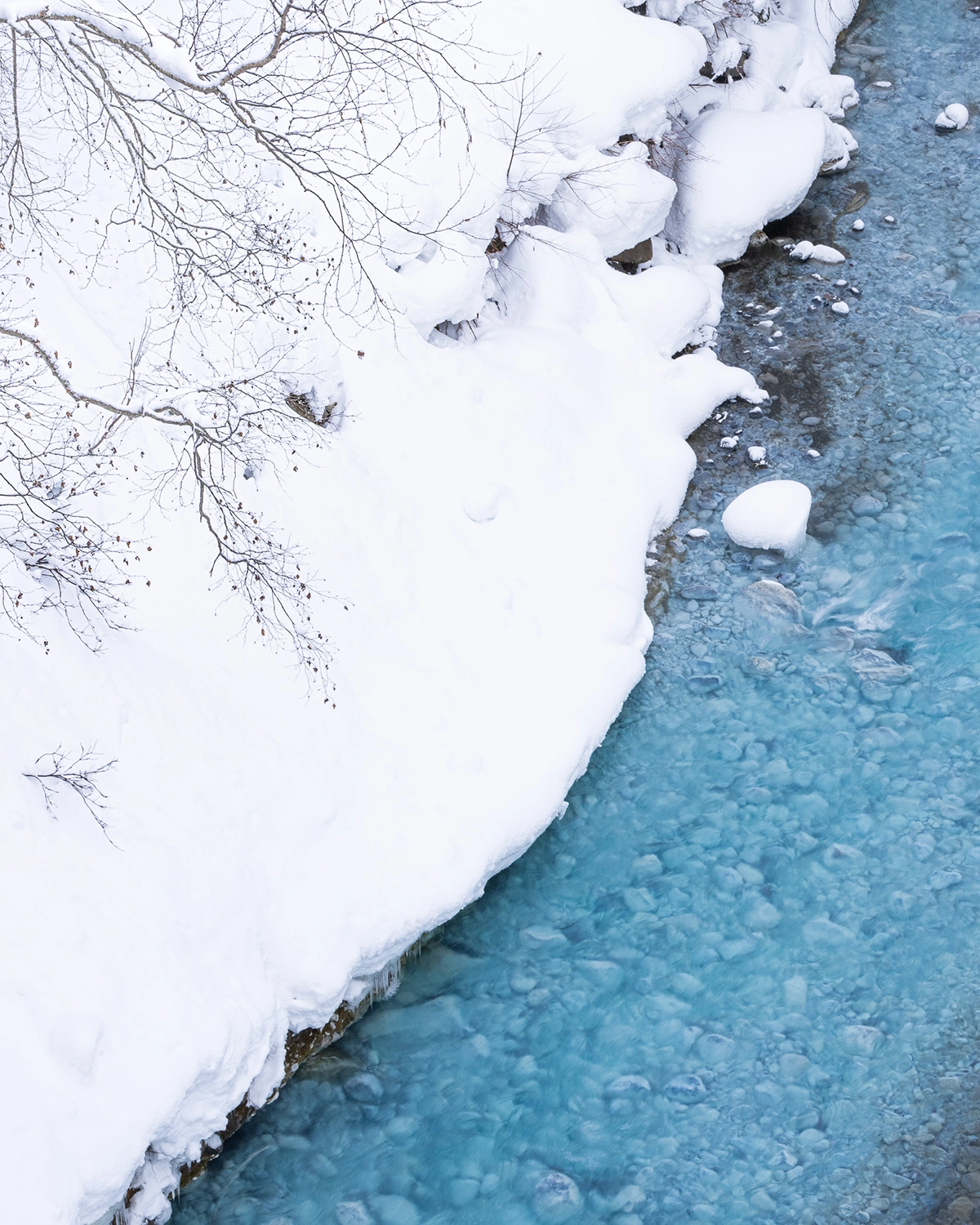
Many Nordic countries have laid claim to the phrase “there is no bad weather, only bad clothing.” When it comes to photographing in winter conditions in northern latitudes, this is the attitude I have adopted when in the field. I find it difficult to concentrate and create comfortably if I am freezing or can’t feel my fingers.
The clothing I pack is not only there to keep me comfortable, but it is also a part of keeping me safe in these harsh environments. Hokkaido, Japan does not typically see temperatures below -4F/-20C and usually has daytime winter temperatures around 32ºF/0ºC. So, while not the coldest place on earth, if I’m not well prepared with warm, insulating layers, I find it hard to function for very long outside my vehicle or room.
Here are some key clothing considerations for winter minimalist landscape photography in Hokkaido:
- Dress in layers – When it comes to layers, I always make sure they are not constricting, especially socks. I want to have room in the material to move and bend, as well as a layer of warm air to build up and be trapped by the fibers (not compression) for the best protection against the elements.
- Choose natural fibers – My personal preference is for natural fibers such as wool (from sheep), khullu (from yak), and qiviut (from muskox).
- Be prepared for heavy snowfall – Additionally, one of the things that makes Hokkaido amazing for minimalist landscape photography is the large amounts of snow that the island receives, especially in January and February. With an average of 13in/33cm of snowfall each week during the winter season, the area of Biei, Hokkaido is a prime example of how much snow photographers should be prepared to contend with during a visit
- Wear stabilizing micro-spikes – I also ensure I have the appropriate footwear which includes stabilizing micro-spikes in this potentially slippery environment.
- Use a quality hat or beanie – For my photo tour participants, I suggest the addition of a hat or beanie that can handle a dusting of snow. This is important when we are standing out in falling snow to capture delicate lines of contrast against the landscape for that fine art touch.
By dressing appropriately, I ensure both comfort and safety, allowing me to fully immerse myself in minimalist landscape photography and capture the breathtaking winter scenes of Hokkaido.
C2: Care
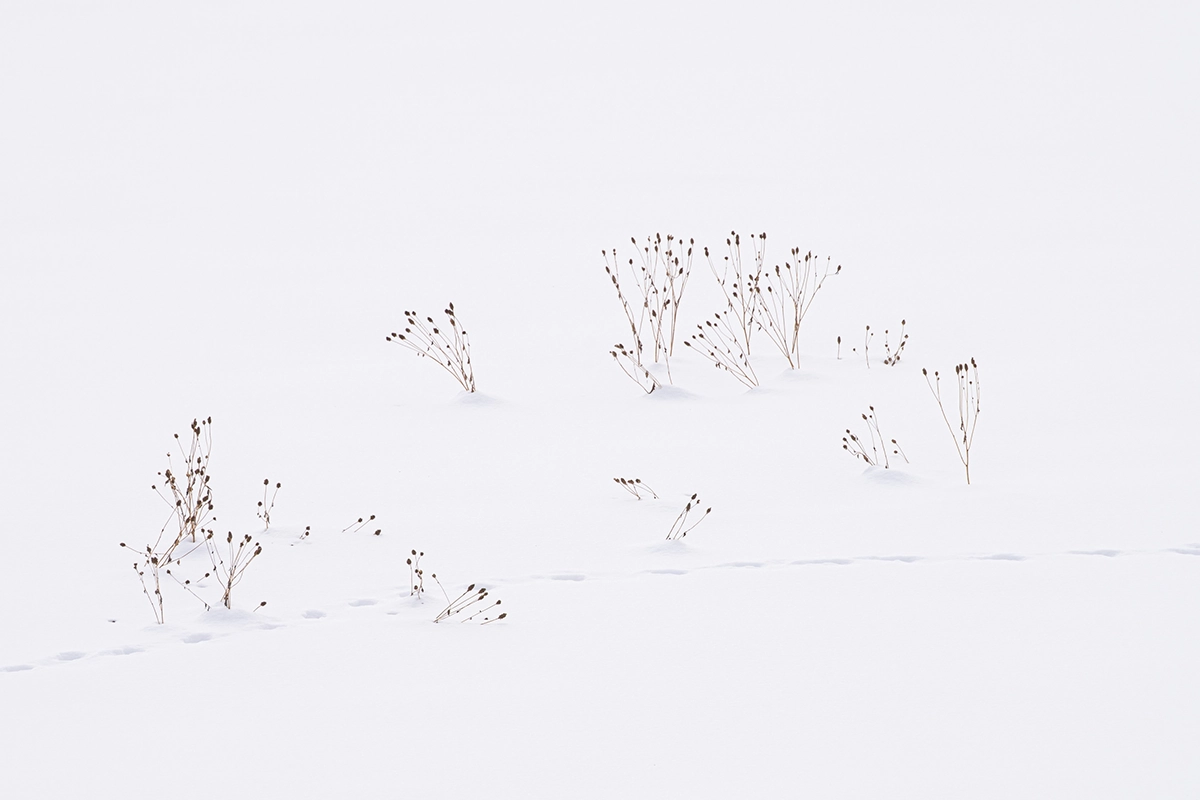
Care takes on several meanings when it comes to photographing in Japan. First is having care with myself, second is having care for those around me as the Japanese culture is one built around societal respect, and third is having care for the environment.
Care for Myself
Ensuring personal safety, being prepared for winter conditions, and understanding local transportation challenges. I already touched a bit on personal safety when it comes to clothing and, as Japan is one of the safest countries in the world, I do not typically have to worry about criminal activity.
However, Hokkaido has limited public transportation options due to its largely rural and wilderness nature, leading many visitors to self-drive when they visit, including myself (if they have not opted for a photography workshop).
I ensure both my personal safety and the safety of others by understanding Japanese driving laws, having prior experience diving on snowy and icy roads, and keeping up to date on local weather and road conditions.
Care for Others
Due to the rural nature of Hokkaido, Japan English is rarely spoken outside a few small tourist hot spots. I highly encourage anyone traveling anywhere in Japan, be it with a photo tour or solo, to learn a few key phrases:
- Hello (こんにちは – Konnichiwa)
- Thank you (ありがとう – Arigatou)
- Excuse me (すみません – Sumimasen)
- May I please have ___? (___ をください – ___ o kudasai)
Additionally, Google Translate and Google Maps are must have apps. They are the two that I use daily while in the country. One of my reasons for suggesting learning a few phrases is not only to help make communication easier, but it also builds good will with the local Japanese as we are trying to respect that we are in their country and do not expect that they will speak our native tongue. I have found these seemingly small signs of respect can go a long way.
Other actions I take to show respect based on my understanding of their societal customs are:
- Avoid eating while walking.
- Not talking on the phone or being loud while on the train/bus/plane.
- Following all posted signage about no trespassing/no parking, as well as respecting signage or body language that asks for no photographs.
Care for the Environment
Japan continuously amazes me with their culture’s relationship to nature. They habitually find ways to incorporate bits of nature into even the heart of Tokyo in simple yet meaningful ways that help enrich daily life for their citizens.
To this, when I visit or lead a photo tour, I ensure that I take care of the environment by following guidelines set forth by internationally recognized organizations such as Nature First and Leave No Trace.
- Packing out what I pack in leaving no waste behind.
- Staying on designated trails to preserve delicate landscapes.
- Considering the second and third order impacts that sharing specific locations can cause on the environment.
By prioritizing personal safety, cultural respect, and environmental responsibility, I ensure a more enriching and mindful experience while photographing Japan’s stunning landscapes.
C3: Camera Gear
Ideally, I always travel internationally with two camera bodies. Not only does this allow me to minimize switching lenses in the field; it also ensures I have a secondary body if something should happen to my primary.
Currently I use a Sony A1 as my primary and a Sony A7RV as my secondary body. As I do travel extensively and like to travel light, Tamron lenses paired with Sony mirrorless e-mount bodies are really an ideal combination.
Below is my carefully selected setup for minimalist winter landscape photography in Japan.
Dual Camera Bodies
Traveling with two camera bodies helps minimize lens switching and provides a backup in case of failure:
- Primary: Sony A1
- Secondary: Sony A7RV
Tamron Lenses for Lightweight Versatility
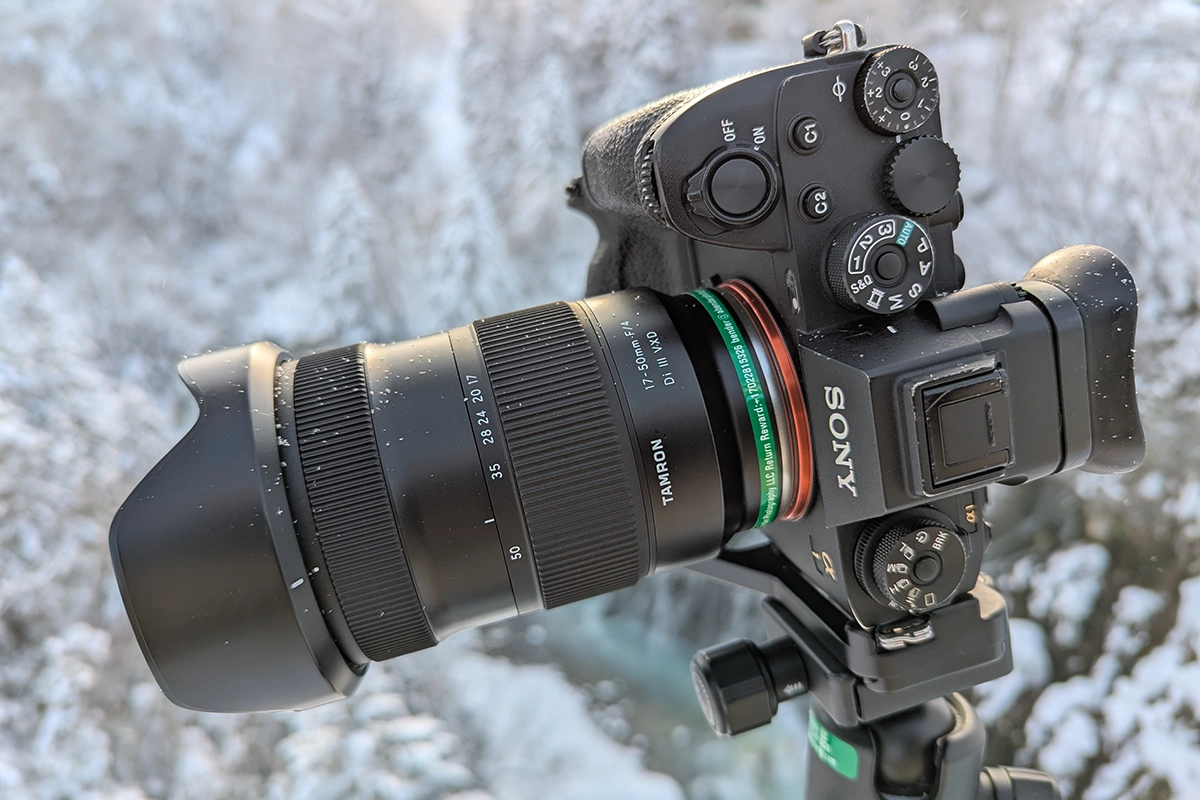
As I do travel extensively and like to travel light, Tamron lenses paired with Sony mirrorless e-mount bodies are really an ideal combination. For a winter landscape trip to Hokkaido, I carry just two lenses:
- Tamron 17-50mm F/4 Di III VXD (Model A068) is ideal for wide-angle landscape shots.
- Tamron 50-300mm F/4.5-6.3 Di III VC VXD (Model A069) provides telephoto reach up to 450mm with APS-C S35 mode.
These two lenses cover a focal range of 17mm to 450mm by using utilizing the APS-C S35 shooting mode in-camera. They are perfect for a diverse landscape portfolio and give me lightweight versatility in compact and durable construction.
Essential Accessories
My go-to gear for efficiency in the field:
- Spider Holster – Indispensable for quick access when working handheld. Overall, I am probably accomplishing 90-95% of my work handheld versus tripod. Meaning that when I am working within close proximity to my vehicle where I’m not using a full backpack, my Spider Holster is indispensable.
- Benro Tortoise Carbon Fiber Tripod with IB1 Triple Action Ballhead – For that other 5-10% of the time when I need a tripod, I absolutely need my tripod and could not ask for a better travel setup than my Benro Tortoise column-less carbon fiber tripod with IB1 Triple Action ballhead.
- Really Right Stuff L-Bracket – L-brackets, good ones that are specifically designed to fit my camera bodies, are not cheap, but they are worth their weight in gold when it is freezing outside, with snow coming down, wind blowing in my face, and I am not having to fight to completely recompose my shot in order to have both a horizontal and vertical image.
By streamlining my gear with reliable, weather-resistant equipment, I ensure I can capture minimalist winter landscapes in Hokkaido with ease and efficiency, regardless of conditions.
C4: Craft
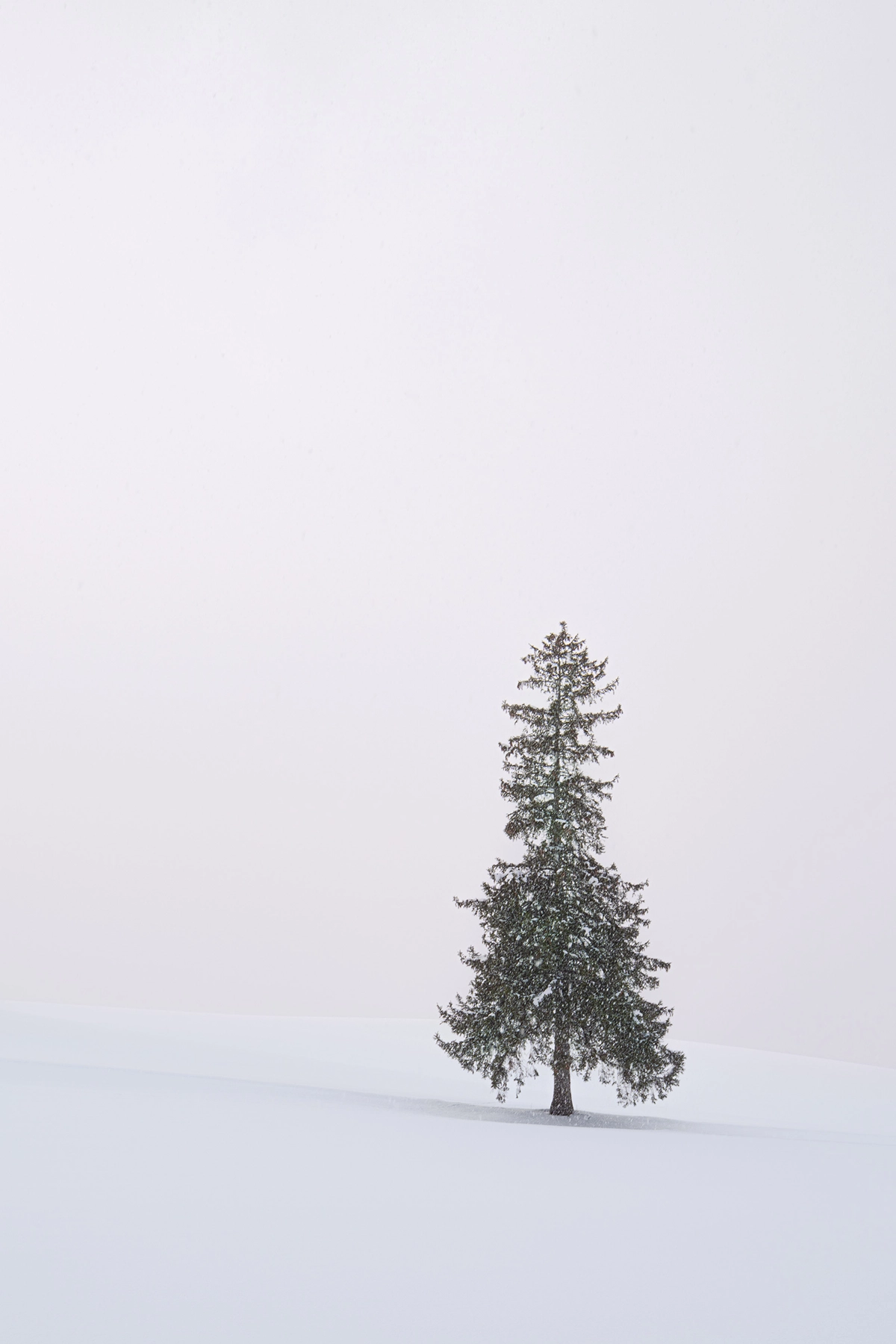
Once I am in Hokkaido, properly dressed and with the camera gear I know like the back of my own glove-covered hand, I start decompressing from my type-A travel mentality into my visual artist mindset. It really is a happy place for me with so much potential around each curve of the road or bend in the trail.
Patience and Exploration are Key
A key component of my fine art minimalist winter landscape photography in Hokkaido is a slow but steady exploration of the countryside. This is not a one-week/one-lodge photo tour type location in my opinion. Yet at the same time, I think it is important to give two or three days to an area so I can explore compositions in different weather conditions. Overcast skies, falling snow, or bright sun can dramatically change the way a scene looks, feels, and is captured.
Efficiency and Adaptability Matter
Rarely do I leave the vehicle with only a single camera, even when photographing from the side of the road. Having the two bodies with the two Tamron lenses allows me to fully work a scene in the moment, trying different compositions on the fly without hesitation or having to dig through a pack or return to the car to change lenses. This keeps my creative flow moving and limits the impacts of switching gear when the light or weather changes.
For example, these two images were taken in the same location about the same time of day but a day apart.
![]()
This first one was taken with the Tamron 17-50mm F/4 for a wider, more “iconic” minimalist image of this stand of trees under broken overcast skies. This is one of the locations many Hokkaido photo workshops will stop, and they type of image they guide their participants to create.
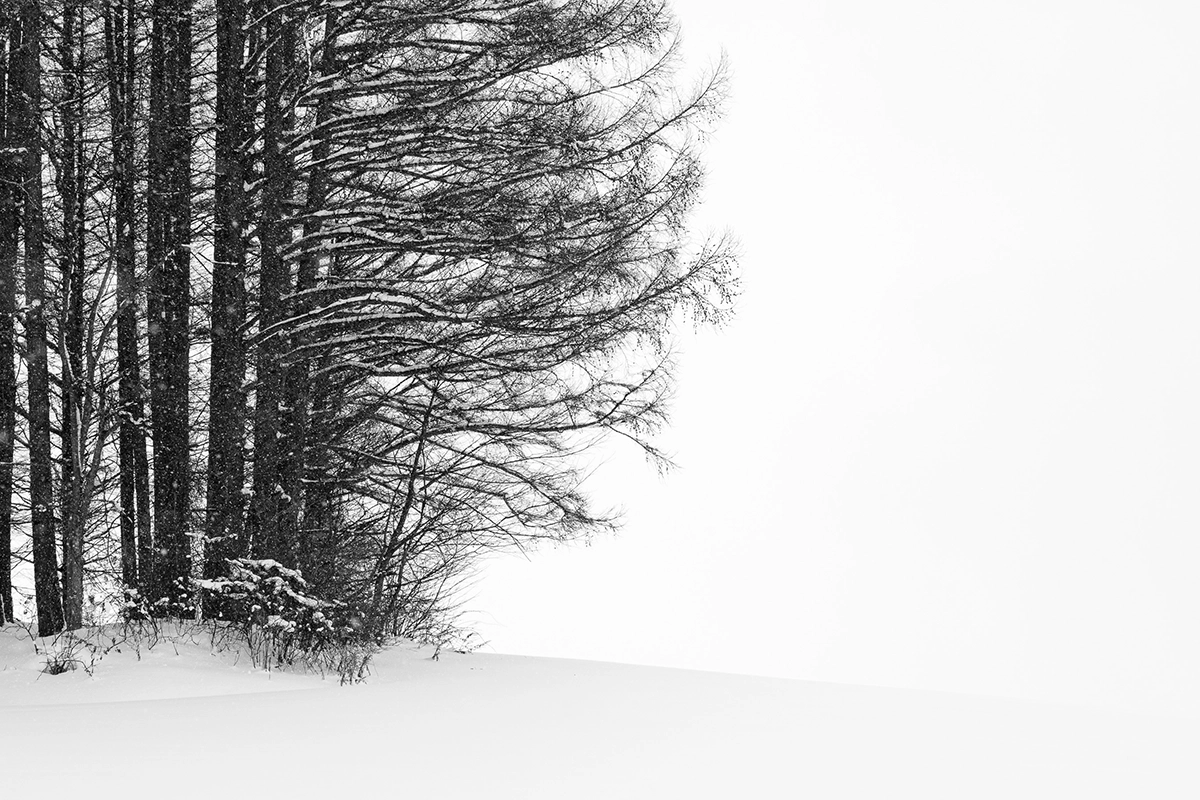
This second one was taken with the Tamron 50-300mm VC for a more unique and intimate minimalist fine art image from the same location during active snowfall. While less “iconic,” I believe we, as visual artist should be looking at all aspects of a scene, not just the one the majority of the general public first gravitate towards.
Maximizing Every Opportunity
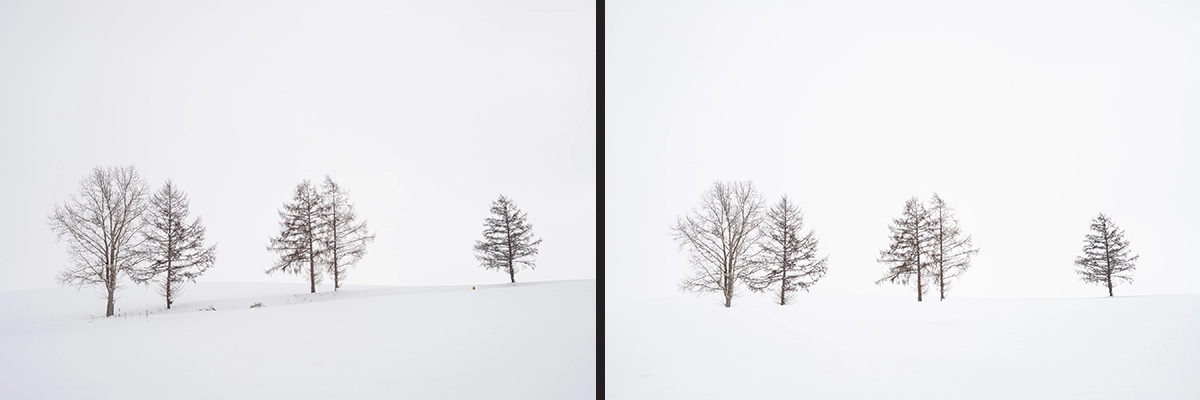
With only a few days in an area, it is always important to me to try to fully work a scene as much as I can before moving on to the next. This means not only utilizing different lens lengths, but perspectives as well. I will often see how a scene looks if I have the camera positioned very close to the ground or, in some cases, if it is well above my natural eyeline.
In these two images, changing my perspective seen in the image on the right by getting lower and allowing the foreground to hide some of the unwanted clutter at the base of the trees, helped my composition. Sure, AI and post-processing techniques make it simple to do after-the-fact, but I prefer to do as much as I can in the field as possible, limiting the amount of post-production my images endure.
Mastering Winter Exposure
Winter images, particularly those with lots of snow, can be tricky when it comes to settings. I utilize my live histogram and ensure that I am exposed to the far right without blowing out my highlights. This is going to get my snow as close to white as possible.
If I were to only rely on the camera’s automatic metering, it would frequently underexpose the scene as it tries for a “middle grey” or mid-range histogram giving me greyish snow. We spend quite a bit of time during photo tours discussing settings as it is a constant theme of photography.
Finding Beauty in the Details
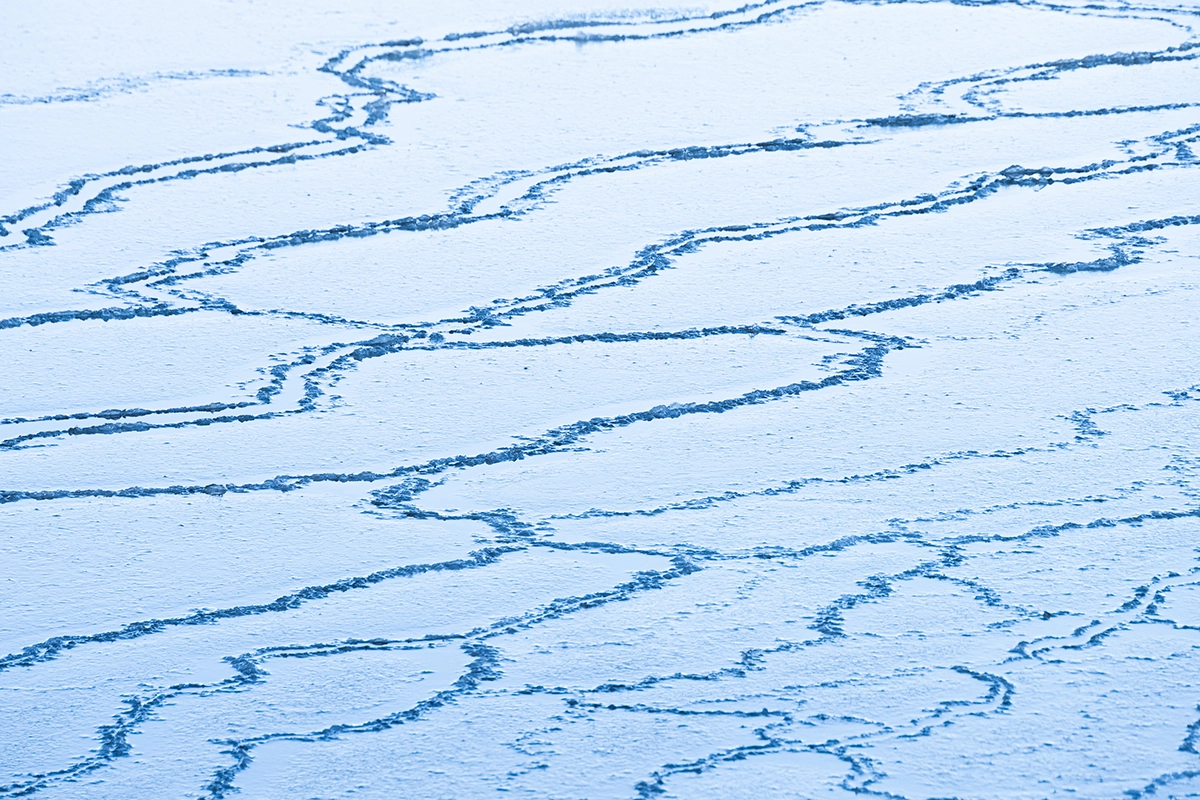
Moving beyond the more obvious fine art compositions of a lone tree in a field with a dusting of snow, winter in Hokkaido shines crystalline light on natural details found throughout the island, from the mountains to the sea. I find my eye is frequently hunting for areas that have plenty of repeating patterns, natural leading lines, contrast between light and shadow, and swaths of texture.
Utilizing the compression of the Tamron 50-300mm and a deeper depth of field, such as an f/10-f/14, I can create an image that solely focuses on a single detail that others may never have seen, even if they were in the same area.
Embracing Creative Experimentation

Finally, when my interest in the traditional methods of fine art photography start to wane, I like to shake it up a bit. Literally! The use of Intentional Camera Movement (ICM), otherwise known as Impressionistic Photography, has long been a fun and interactive way for me to really break out of any rut I might be feeling and add a different type of fine art image to my trip portfolio.
For those unfamiliar, ICM is where a longer shutter speed in the range of 1/20-1/2 second is used, usually by closing down the aperture and using the lowest native ISO of the camera.
This elongated shutter time gives the visual artist time to intentionally and physically move the camera during the exposure. There is a lot of practice, play, and shutter presses that go into finally capturing an impressionistic image that I like, but I enjoy the process just as much as the final product.
My Final Thoughts on Minimalist Winter Landscape Photography
For me, there is no better location for minimalist winter landscapes than Hokkaido, Japan. The wide range of environments, from volcanic lakes to farm fields that roll down to tall cliffs and black sand beaches, provide so many fine art photographic opportunities that I cannot help but keep going back for more each year.
My hope is that visual artists, including photographers, will continue to enjoy, explore, and respect the island’s natural wonders, be it on a photography workshop or solo adventure!
Safe travels and interesting light until next time! Cheers.
Ready to create your own minimalist winter landscape photography? Learn more about the Tamron lenses Alyce Bender uses and more at an authorized Tamron dealer near you or shop now at the official TAMRON Store.
About Alyce Bender
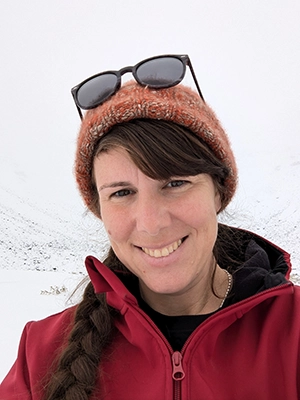
Alyce Bender is a professional nature photographer, writer, educator, U.S. Air Force veteran, and Tamron Americas ambassador. Her passion for the natural environment compels her to connect others with nature through education and experiences that promote conservation, creativity, and ethical photography. Her work has been featured in group and solo shows across the U.S. as well as in domestic and international publications from the U.K. to Japan. When leading tours, Bender’s goal is to help photographers expand their personal vision and naturalist skills. When not in the field, she offers a variety of educational and mentorship programs. See Alyce Bender’s work on her website and Instagram.